When it comes to watering your garden, there are a few different methods you can use. You can water your plants by hand, use a sprinkler system, or install a soaker hose. Soaker hoses have become increasingly popular in recent years because they are an efficient and effective way to water your plants. But one question that many people ask is whether you can bury the soaker hose. In this article, we will answer that question and provide some tips on how to use a soaker hose effectively!
Can A Soaker Hose Be Buried?
The short answer is yes, you can bury a soaker hose. But there are some considerations to be aware of before doing this.
Can I Put A Soaker Hose Under Mulch?
Layout The System To Reach the Maximum Plants
Yes, you can put a soaker hose under mulch. While it is not necessary for the soaker hose to be buried, doing so may help you reach more of your garden with water, as well as keep the soil temperature steady for longer periods of time.
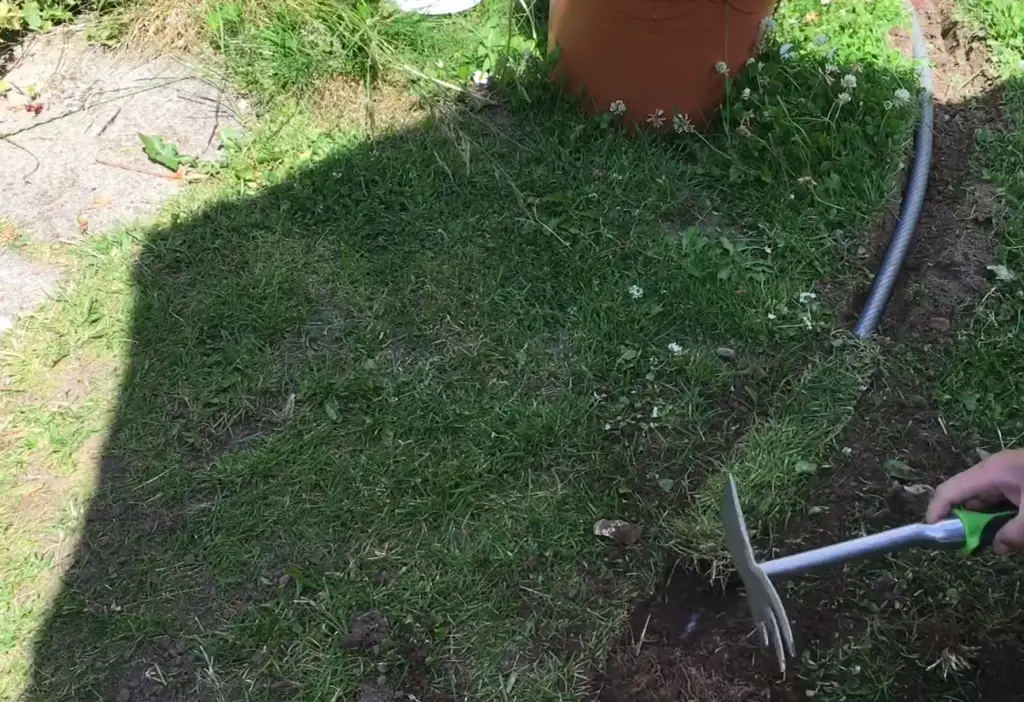
When laying out your soaker system and deciding where to position it beneath the mulch layer, consider the size of your plants and how much water each one needs. Larger plants will require more water than smaller ones. You also need to think about how far away from any trees or shrubs the soaker hose should be placed; too close it could damage their roots. [1]
Attach The Pressure Regulator
Once you have the soaker hose in place, attach a pressure regulator to it. This is an important part of any irrigation system since it will help control the flow of water, preventing too much or too little from reaching your plants. The exact type and size of regulator you need will depend on the size of your garden and the number of plants you’re watering. [1]
Attach The Soaker Hose
Finally, you should attach the soaker hose to a timer. This will allow you to set precise watering times and intervals for your plants, ensuring that your garden gets enough water without wasting any. If you’re using an automatic system, make sure to program the timer correctly so that your plants get watered at the right time and with the right amount of water. [1]
Turn Off The Water Supply
When you’re finished setting up the soaker hose, it’s important to turn off the water supply. This will help prevent any damage or leaking from occurring as a result of pressure buildup. Make sure that all valves are in the “off” position and that your hoses are securely connected before turning on the water again. [1]
Measuring The Amount Of Water
Once the system is in place, you should measure the amount of water each plant is receiving. This will help you adjust the water pressure and flow rate of your soaker hose so that each plant gets its fair share. You can also use a rain gauge to track how much water your garden is getting over a certain period of time. [1]
Attach the timer.
Finally, attach the timer to the soaker hose. This will allow you to set specific watering times and intervals for your plants, ensuring that your garden gets enough water without wasting any. Make sure to program the timer correctly so that your plants get watered at the right time and with the right amount of water. [1]
How Long Do You Run A Soaker Hose?
It’s also important to note that if your area receives regular rains or has large bodies of standing water in close proximity, you may need to adjust this time accordingly. [1]

How Effective Are Soaker Hoses?
Soaker hoses are an effective way to efficiently water your garden or lawn without wasting water. By ‘weeping’ out only the amount of water needed for each plant, soaker hoses allow you to save both time and money when it comes to watering.
However, it is important that you use a soaker hose correctly in order for it to be as effective as possible. One common question is whether or not these hoses can be buried. In this article, we will answer this question and provide some tips on how to use a soaker hose effectively. [1]
What Is The Difference Between A Soaker Hose And A Drip Hose?
A soaker hose is a porous tube made of plastic, rubber, or fabric that slowly and uniformly releases water along the entire length of its body. A drip hose, on the other hand, has tiny holes at regular intervals along its body that allow for a more targeted release of water directly to the root base of plants. [1]
The Benefits of Burying a Garden Hose Underground
No Longer Need to Carry a Hose
Burying a soaker hose underground has many benefits. Most notably, you no longer need to carry around a heavy and unwieldy garden hose. Also, burying your soaker hose will keep it out of sight and prevent accidental tripping over the hose. In addition, when buried underground, your garden hose will be kept safe from external damage such as UV rays and extreme temperatures. [2]
Protect Hose from the Elements
When burying a soaker hose underground, it is important to protect the hose from the elements. Make sure to choose a location that is well-drained and away from trees or other plants with aggressive root systems. Also, make sure to use materials such as pea gravel or sand around the hose to prevent soil compaction and help it absorb water more evenly. Finally, consider using a tube or conduit when laying down your soaker hose underground; this will give added protection against punctures and tears. [2]
Avoid Puncturing a Hose
When burying a soaker hose, it is important to ensure that you don’t puncture the hose. Before burying your garden hose, check it for any holes and make sure there aren’t exposed wires or sharp objects nearby that could cause damage. Also, be sure to place the soaker hose at least eight inches below ground level; this will provide better protection against accidental punctures. Additionally, when burying your garden hose in shallow areas, consider using a deeper trench for added safety and protection. [2]
Improved Winterization
When burying a soaker hose underground, you will also benefit from improved winterization. Make sure to completely drain the hose before burying it and disconnect any extra hoses or attachments. Also, consider using an end cap or plug to prevent water from entering the hose and causing damage during cold weather months. Additionally, installing a thick layer of mulch over the soil can provide added insulation for your garden hose in colder climates. [2]

Common Problems of Burying a Garden Hose Underground
If you’re considering burying a soaker hose in your garden, it’s important to understand the potential problems associated with this method.
Here are some of the most common issues:
- The soil and weather conditions can cause your hose to crack or leak over time. This can require costly repairs or replacement, which could be avoided if you opted for a more traditional watering system.
- Underground hoses can be difficult to repair since they’re buried deep in the ground. If there is an issue with the hose, it might need to be dug up, fixed, and then replaced back into the ground – taking extra time and effort on your part.
- Buried hoses can be easily damaged by animals, such as moles or gophers. These pests are attracted to moisture and can chew through your hose in no time!
- You need to use a heavy-duty garden hose that is specifically designed for underground applications. Regular hoses will not hold up against the elements and pressure of being buried [2];
Preferred Type of Garden Hose to Bury Underground
When considering whether you can bury a soaker hose, it’s important to consider what kind of garden hose is best for this job. Generally speaking, a non-permeable garden hose works best for burying underground, since it won’t leak water into the surrounding soil and potentially affect nearby plants or flowers.
Things to Consider for the Right Hose to Bury Underground
When it comes to burying a soaker hose underground, there are a few important things to consider. First, you must make sure the hose is strong enough and durable enough to withstand the elements and temperature changes that come with being buried. Make sure you purchase a hose specifically designed for in-ground watering applications—these hoses are typically made of rubber or plastic material that can resist heat and cold better than garden-variety soaker hoses on the market. [2]
FAQ
How do you hide a soaker hose?
The easiest way to hide a soaker hose is to use mulch or soil. Make sure that the soaker hose is laid on top of an even surface and then cover it with a layer of mulch or soil. This will help the hose blend in with your garden, giving it a more natural look.
You can also use edging around the hose to give it a definition. Edging looks like small stones and can be used to create pathways or curved shapes to make your garden look aesthetically pleasing.
What kind of hose can I bury underground?
The best type of hose to bury underground is a soaker hose. Soaker hoses are designed to be leak-proof and are usually made from rubber or plastic. Make sure that the soaker hose you’re using is certified for underground use, as some may not be suitable for this purpose.
Additionally, when burying any type of hose, make sure to check your local regulations first as there may be restrictions on what can and cannot be buried underground.
Can I put a soaker hose on top of the mulch?
Yes, you can put a soaker hose on top of the mulch. However, make sure to keep your hose away from any sharp objects or edges that may puncture it. Additionally, when using a soaker hose on top of the mulch, be sure to use soil or another material underneath it as this will help keep water from spilling onto other areas.
Finally, always check your local regulations before burying any type of hose in order to avoid potential fines or other penalties.
Do you leave soaker hoses on all day?
No, it’s best to only leave soaker hoses on for a few hours at a time. Operating the hose for too long may cause damage due to overwatering and can create waterlogged soil in your garden. Additionally, leaving soaker hoses on all day can also lead to costly water bills.
Instead, it’s recommended that you set up timers or controllers to turn the hose off after a certain period of time. This will help ensure that your plants are receiving adequate water without any excess waste.
Do you cap the end of a soaker hose?
Yes, you should always cap the end of a soaker hose in order to prevent any water from leaking out. This will also help ensure that your garden is receiving an even amount of water across its entire length.
If the end of the hose is open and not capped, it can cause uneven watering patterns which may result in some plants receiving too much or too little water. Additionally, leaving the hose uncapped may allow other debris such as twigs and leaves to enter, potentially clogging up the system.

Should I bury the soaker hose for the foundation?
No, it’s not recommended that you bury the soaker hose for the foundation as this could potentially cause problems with your home’s structural integrity. Soaker hoses are designed to be laid on top of the ground and should never be buried directly beneath the foundation.
Can you leave soaker hoses out all winter?
No, it’s not recommended that you leave soaker hoses out all winter. If left in freezing temperatures, the hose may become damaged due to the expansion and contraction of the water within it. Additionally, freezing temperatures can cause damage to the plastic or rubber material used in most soaker hoses.
Can you run a soaker hose overnight?
Yes, you can run a soaker hose overnight as long as it is connected to a timer or controller. Running the hose overnight will help ensure that your plants are receiving adequate water without any excess waste. Additionally, setting up controllers will also allow you to adjust the amount of water being released based on the needs of your plants.
Useful Video: Burying Our Soaker Hose
Conclusion
Soaker hoses are an efficient and cost-effective way to water your plants. Burying the soaker hose can be a great solution if you want to keep it out of sight or use it for deep watering. Just make sure that you’re aware of the risks associated with burying and follow safety precautions like using underground PVC pipes to protect the soaker hose from getting damaged. If you properly bury and maintain your soaker hose, you should have no problem enjoying its benefits in your garden for years to come. Good luck! Happy gardening!
References:
- https://landscapingplanet.com/can-a-soaker-hose-be-buried/
- https://turfmechanic.com/can-you-bury-a-garden-hose-underground/





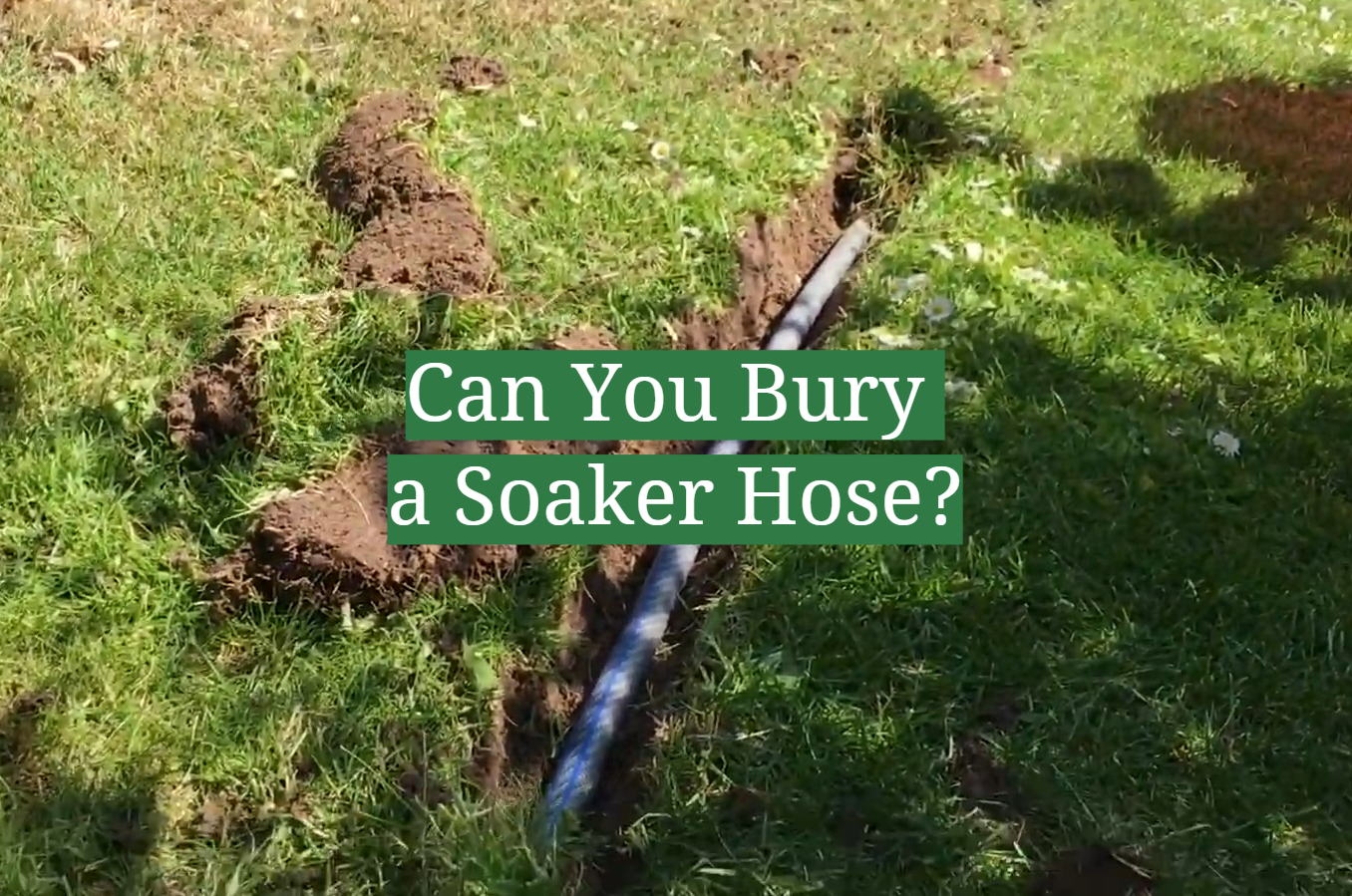
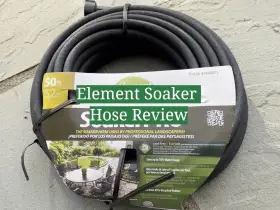
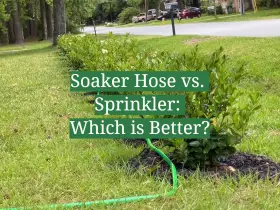
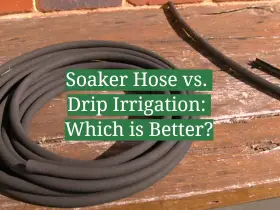
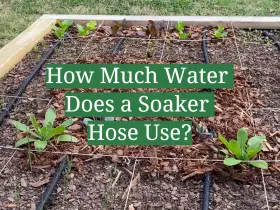
Leave a Reply
View Comments